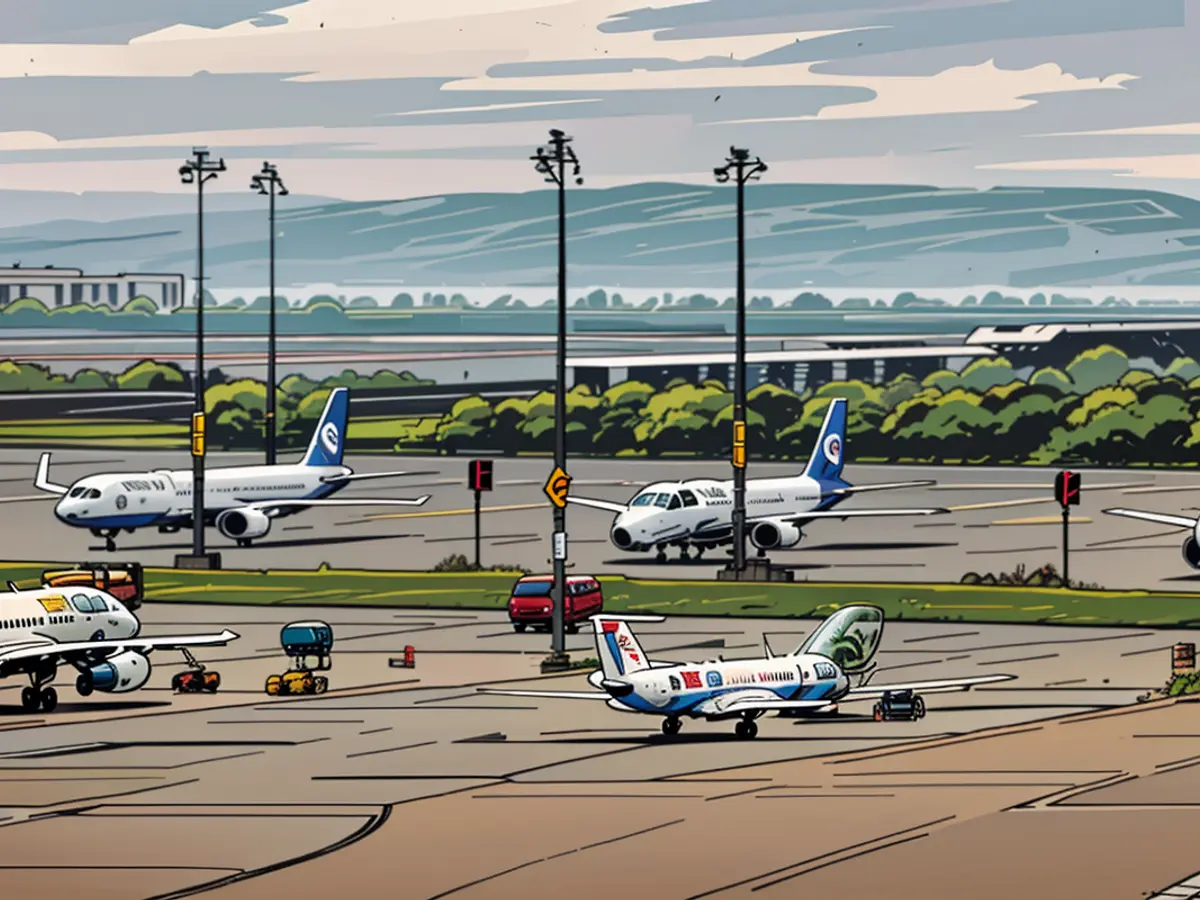- Soaring costs, dwindling availability - the situation at German airports
Airfare prices have skyrocketed in recent years, with flights to European destinations seeing a 31.9% increase in the first half of 2023 compared to the previous year, as per the Federal Statistical Office. Factors such as high fuel prices and increased wages for security personnel have led airlines to pass on these costs to customers. However, customer demand for paying higher prices hasn't kept pace with rising costs, leading to a slower increase in flight prices by 2.7% in the first half of 2024. This has caused issues for airlines, with Ryanair, for instance, announcing this week that it will withdraw aircraft from Berlin and remove six routes from its schedule.
Shrinking flight offers at German airports
This isn't an anomaly. The Federal Association of German Air Traffic (BDL) shows how the number of flights at German airports is dwindling, using Stuttgart as an example. Between 2019 and 2024, 17 connections to European cities were discontinued in Stuttgart, while only seven new ones were added. Frequencies on existing routes decreased significantly, dropping by over 70% to Lisbon. While passenger numbers have already reached pre-pandemic levels in other large European countries, German airports are lagging behind, with only 83% of 2019 traffic volume recorded in the first half of 2024.
Higher taxes and charges impact low-cost airlines
Airlines attribute the main cause of these increases to higher duties and taxes, which have risen by over 20% in May. Each passenger now pays between 15.53 and 70.83 euros in addition to the ticket price. The cost of security control is also expected to rise from a maximum of ten euros to up to 15 euros in 2025. The BDL claims that taxes and duties have almost doubled since 2020. Furthermore, airlines will be required to use a small amount of sustainable fuel in their planes from next year, which is significantly more expensive. Low-cost airlines such as Ryanair, Easyjet, and WizzAir have only managed to reach 71% of their 2019 traffic volume in the first six months of the year.
Lower costs in other countries
The BDL has calculated the taxes and duties for an intra-European flight on an Airbus A320 carrying 150 passengers. Using Stuttgart Airport as an example, costs have increased from 2389 euros in 2019 to 4404 euros this year, representing an 84% hike. Of this, 2330 euros goes towards air traffic tax, 1716 to the air security levy, and 358 to air traffic control for takeoff and landing. The price increases in Stuttgart are significant, but not unique. In Düsseldorf, the association reports that costs have almost doubled. Notably, takeoffs and landings in Germany are significantly more expensive than in other countries.
To offset these costs, airlines are implementing various strategies. Hand luggage, which was previously free, now comes with a price tag, sometimes even costing more than the ticket itself. Several low-cost airlines in Spain have been fined 150 million euros for overcharging. Lufthansa, Germany's national airline, plans to introduce an environmental surcharge for flights starting next year, with the aim of covering "steadily increasing additional costs." This surcharge will be clearly stated to inform customers that they are paying to reduce and offset the carbon dioxide emissions caused by their flight, rather than the airline profiting from it. Ultimately, the customer either pays for all costs and a markup for the airline they choose, or the offer shrinks and eventually disappears, like Ryanair's offer in Berlin.
The increase in airfare prices, resulting from factors like high fuel prices and increased wages, has led to rising prices overall.
Despite customer demand not keeping pace with these rising costs, airlines are still struggling to maintain their flight offerings, with some, like Ryanair, reducing their presence in certain locations.








